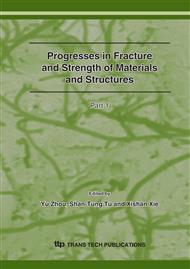p.457
p.461
p.465
p.469
p.473
p.477
p.481
p.485
p.491
Finite Element Study of Factor Effects on Residual Stresses and Thermal Deformation of Brazed Plate-Fin Structure
Abstract:
The brazed plate-fin structure is the key component of a compact plate-fin heat exchanger (PFHE). The thermal deformation and residual stresses induced by vacuum brazing may bring negative effects on the quality and the life of the plate-fin structure. Thus it is important to optimize the brazing parameters in order to minimize such effects. This paper presents a three-dimensional finite element analysis for determining the thermal deformation and residual stresses of a three layers of stainless steel plate-fin structure fabricated by nickel-based brazing. The feature of thermal deformation and residual stresses distribution are discussed. The effects of three major factors including brazing temperature, clamping pressure and filler metal on the thermal deformation and residual stresses are investigated respectively.
Info:
Periodical:
Pages:
473-476
Citation:
Online since:
September 2007
Authors:
Price:
Сopyright:
© 2007 Trans Tech Publications Ltd. All Rights Reserved
Share:
Citation:


